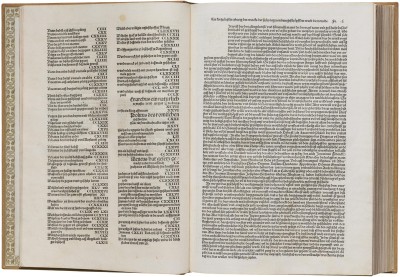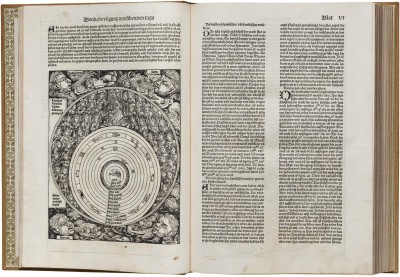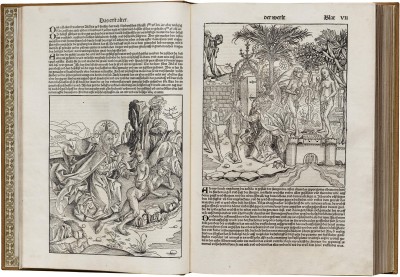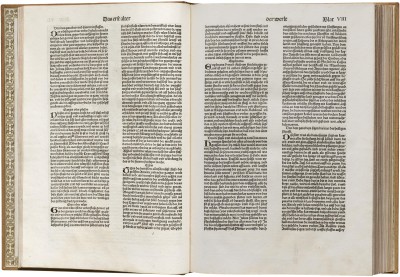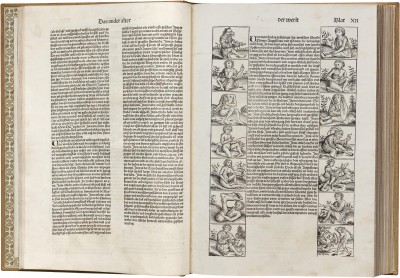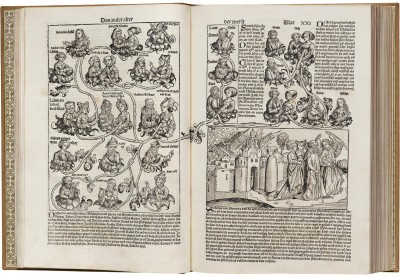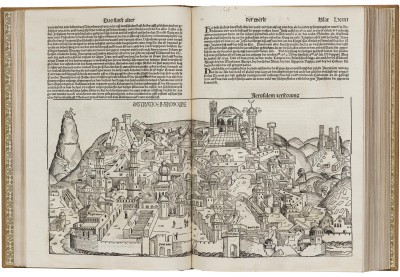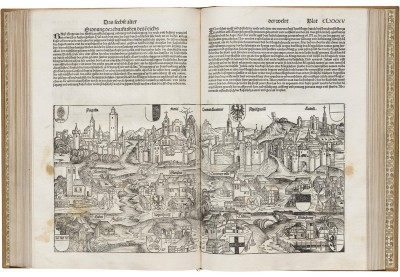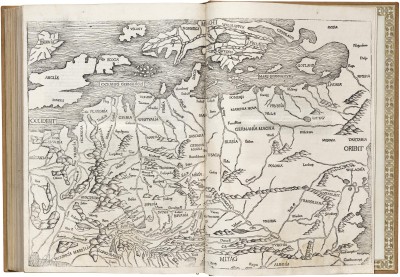News
This Just In: The Nuremberg Chronicle
Now at Letterform Archive, a landmark of 15th-century bookmaking.
We are thrilled to announce the acquisition of our first complete incunable (book printed before 1501). The Nuremberg Chronicle is one of the most densely illustrated and technically advanced incunables, and helps us tell the story of letterforms in the early years of printing.
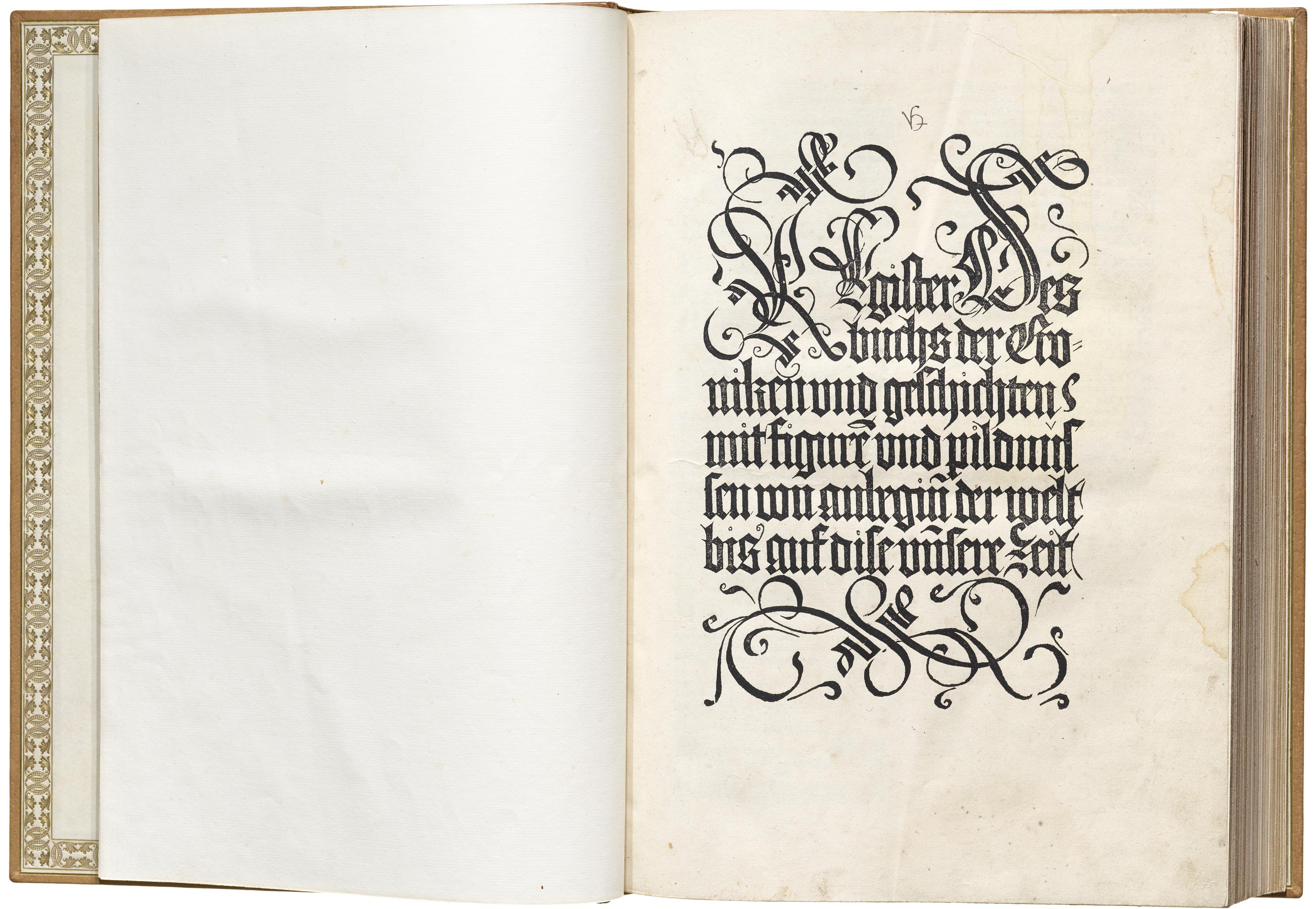
Titled in Latin, Liber Chronicarum (Book of Chronicles) was published in 1493, at a time when a new movement of humanism was riding the wave of the printed word. Thirty-eight years earlier, with the advent of movable type and mechanical printing, Gutenberg’s Bible ushered in the spread of religious literacy, but it was work like the Chronicle that accelerated humanist ideas: art, philosophy, science, and critical thinking. It was a book published not for purely religious purposes, but rather “for the common delight”.

Nuremberg was one of the largest cities in the Holy Roman Empire at the time, and a northern center of humanism. The Chronicle was funded by two Nuremberg merchants, Sebald Schreyer and Sebastian Kammermeister, who commissioned Anton Koberger, founder of the first printing house in the city, to publish it. In a strange twist of artistic fate, Koberger happened to be the godfather of a young Albrecht Dürer who lived on the same street as the printer. Some scholars, such as San Francisco printer and book designer Adrian Wilson in his book The Making of the Nuremberg Chronicle, theorize that Dürer was involved in the book, drawing sketches for the woodcuts. Yet that possibility is contradicted by records indicating Dürer only worked as an apprentice in Nuremberg until 1489, leaving long before Chronicle production began in 1491. Still others question that time frame, as two years would be a very tight schedule for such a huge project.
The author of the Chronicle, Hartmann Schedel, was actually more of a compiler. He collected books, having amassed some 670 printed editions, and borrowed most of his text from other humanist chronicles. First written in Latin and almost immediately translated to German so it could be accessible to a wider public, the book tells the story of the Christian world, from creation to the time of the Chronicle’s publication. Around 2,500 copies were published, one of the largest print runs of any incunable. Such world histories were not uncommon in the late 15th century. So what, besides its size (297 pages at 44×31cm for our copy), made the Nuremberg Chronicle so popular and its legacy so enduring? The pictures. Hundreds of images are spread throughout the book depicting important figures, events, and, most notably, grand cityscapes (including Babylon, Cologne, Jerusalem, Munich, Nuremberg, Prague, Rome, and Vienna), some sprawled across double-page spreads.

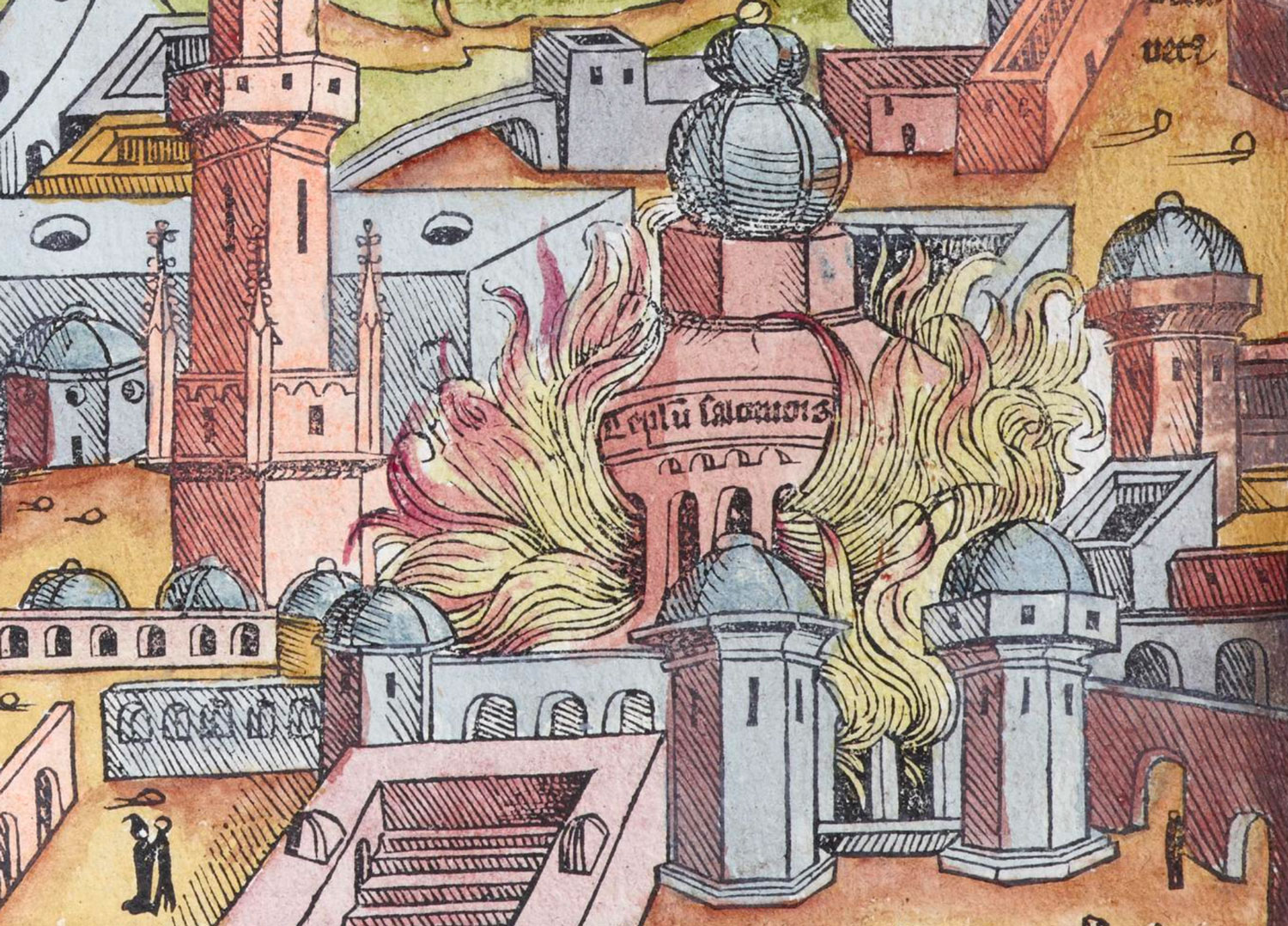 Our copy of the Chronicle is black and white, but some are hand-colored, such as this Latin edition from Cambridge University Library.
Our copy of the Chronicle is black and white, but some are hand-colored, such as this Latin edition from Cambridge University Library.The illustrations, created from woodcuts by Michael Wolgemut and Wilhelm Pleydenwurff, total over 1,800. That total, however, depends on how you count. One aspect of the Chronicle that facilitates its massive scope, and makes it such a fascinating page-turner for contemporary viewers, is its frequent reuse of woodblocks to depict multiple people and places. For example, 53 cuts were used to represent 101 different cities and countries, and only 96 cuts represent 593 different saints, popes, kings, and scholars. When a single woodblock is used an average of six times throughout the book, one can’t resist trying to spot repeated impressions. It’s a sport made for the kind of aesthetes and bibliophiles that frequent the Archive. Now that we have our own copy of this big, beautiful book, we welcome guests to page through the Chronicle for themselves and play the game in person.
— Stephen Coles, Associate Curator & Editorial Director
Selected Spreads from the Nuremberg Chronicle
All images in this gallery are high res and zoomable. Click an image to enter fullscreen view, then pinch (on trackpad or mobile) or use browser zoom (on desktop).


